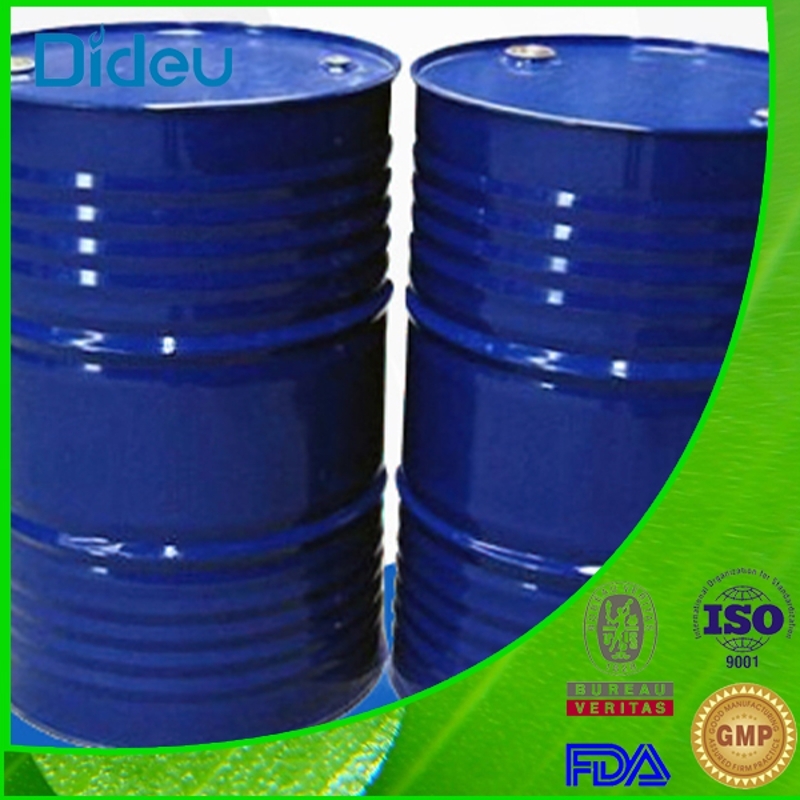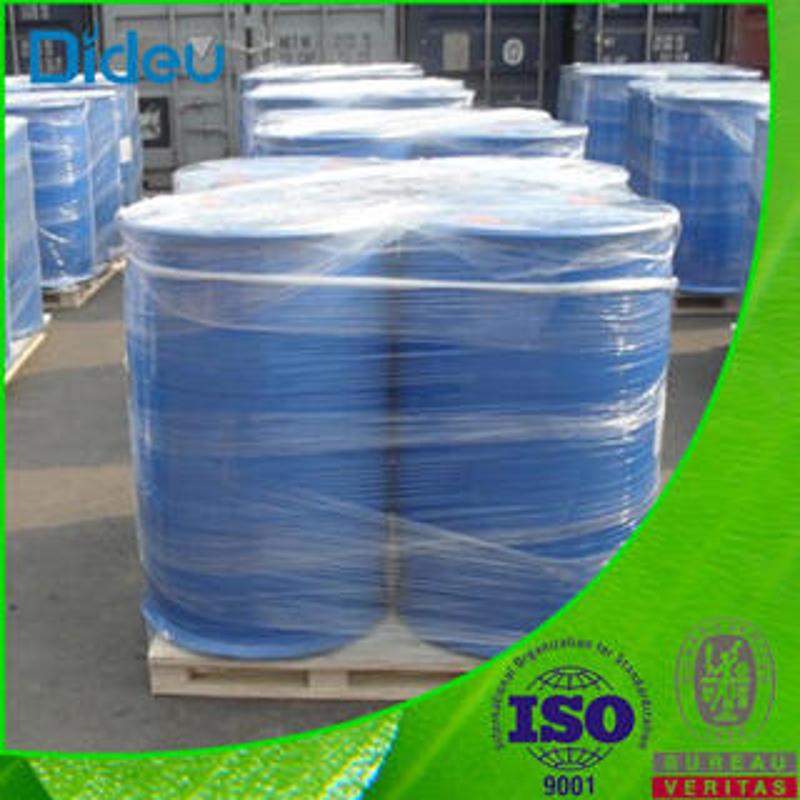Effect of titan dioxide particle size distribution and pigment volume concentration on pigment performance (2)
-
Last Update: 2020-09-20
-
Source: Internet
-
Author: User
Search more information of high quality chemicals, good prices and reliable suppliers, visit
www.echemi.com
2 Results and discussions . 2.1 Titanium white powder particle size and particle size distributionFigure 1 shows the particle size distribution map determined by SY-1 and SY-2 using laser particle size analyzer MS 2000. As can be known from Figure 1, SY-2 has a narrow particle size distribution and a smaller average particle size, SY-1 has a wide particle size distribution and a large particle average diameter. SY-1 has a wider particle size distribution than SY-2 and is more granular.. 2.2 The relationship between pigment volume concentration and coating gloss Titanium white powder pigment is only one of the coating parts, the pigment itself is not shiny, the coating film is only shiny, but the effect of pigment parts in actual production determines the gloss of the coating film. Because of the narrow particle size distribution of SY-2 and the small particle average diameter, it belongs to the product produced by fine grain substat, while the particle size distribution of SY-1 is relatively wide and the average diameter of particles is relatively large, it belongs to the product produced by the medium particle size substation.. For different goldstone-type titanium white powder, the gloss of the coating film is related to pigment particle size and particle size distribution. As can be seen from Figure 2, two titanium dioxides with different particle size and particle size distribution levels show the same regularity when the pigment volume concentration changes, and the gloss of the coating film decreases with the increase of pigment volume concentration. The smaller particle size and narrow distribution of titanium dioxide powder decreased by a smaller margin, that is, SY-2 decreased by a smaller margin, because of the particle density effect, small particle size and narrow particle size distribution of SY-2 can maintain a better smooth coating surface.2.3 The relationship between pigment volume concentration and huethe titanium dioxide of SY-1 and SY-2 was added to the coating of the acrylic system according to the volume concentration of different pigments, and then the phase L-value corresponding to their coating was measured. The value obtained by the instrument determination is shown in Figure 3.As can be seen from Figure 3, both SY-1 and SY-2 show the same trend for paint-specific redstone titanium dioxide powders, where the volume concentration of pigments increases gradually from 10%, so does the value of L. When the PVC is 30%, it is the highest value rendered by the L-value.. The b-value is a very important application indicator presented in both titanium dioxide pigments and acrylic coatings. SY-2 is a gold-redstone-type titanium dioxide powder produced by fine-grained substations, while SY-1 belongs to a gold-redstone-type titanium dioxide powder produced by medium-grained substations.can be seen from Figure 4, the value of titanium dioxide pigments of different granularity in the acrylic coating film will increase with the increase of pigment volume concentration. Because the pigment volume concentration increases, the number of pigment particles is very large, so that the distance between pigment particles naturally narrows, especially for small particles such as SY-2 pigment particles, once the pigment volume concentration is too high, there will be because the number of particles, particle spacing will also become smaller and dense phenomenon, thereby reducing light scattering Energy, the absorption of light accounted for the main role, impurities on whiteness will become more obvious, then the b-value will increase, however, large particles such as SY-1 pigment particles, it is difficult to present a dense effect, so in the high pigment volume concentration relative to small particles pigment has a higher light scattering energy. Therefore, when the pigment volume (PVC) is 20% to 55%, the b-value of SY-2 is much higher than the b-value of SY-1.as a white pigment, there are many factors affecting titanium dioxide whiteness, in the production of a typical titanium dioxide impurity content and particle size and particle size distribution. Therefore, in order to improve whiteness, in addition to reducing impurity content as much as possible, improve chemical purity, there is to avoid defects in titanium dioxide lattice, at the same time to adjust and control the particle size and particle size distribution of titanium dioxide, enhance its dispersion, improve light scattering energy.can be seen from Figure 5, the whiteness increases and decreases with the increase of pigment volume concentration at different pigment volume concentrations. SY-2 is a gold-redstone-type titanium dioxide powder produced by fine-grained substations, while SY-1 is a gold-redstone-type titanium dioxide powder produced by medium-grained substations. For small-grain pigment particles, once the pigment volume concentration is too high, the more particles there are, the smaller the particle spacing and the dense phenomenon, thereby reducing whiteness.. 2.4 Relationship between pigment volume concentration and cover force Titanium dioxide distributed at different particle sizes is dispersed in the same pigment volume concentration (PVC) medium, and the coating cover force is different. And the same titanium white powder dispersed in different pigment volume concentration of the medium, the resulting coating cover force is more different. In other words, the optimal granularity of the pigment is closely related to the volume concentration of the pigment in the dispersed medium used. Titanium dioxide with different particle size distributions has different values at different pigment volume concentrations.As can be seen from Figure 6, SY-1 has a higher covering force than SY-2 at low pigment volume concentration (PVC -10% to 25%), while at high pigment volume concentration (PVC is 25% to 55%), SY-2 has a slightly higher covering force than SY-1. Since SY-2 belongs to the gold-redstone titanium dioxide produced by fine-grained substitums, and SY-1 belongs to the gold-redstone titanium dioxide produced by medium-grained substation, the average granularity of SY-2 is smaller than that of SY-1. Thus, when dispersed in the film at a low pigment volume concentration, SY-1 can maintain a better particle spacing and light scattering energy in the medium and exert excellent masking force, while at high pigment volume concentration, SY-2 can disperse particle spacing in the medium is closer to suitable particle spacing than SY-1, its light scattering energy will be slightly better than SY-1, the covering force will be slightly better than SY-1.. 3 ConclusionBecause titanium dioxide pigments have both high opacity and high reflectivity, so different pigment volume concentration titanium dioxide in acrylic coating, after its coloring material not only covers high, but also bright tones and smooth as a mirror luster. This experimental study analyzes the effect of titanium dioxide particle size distribution and pigment volume concentration on pigment performance -the gloss, whiteness, phase (L, b) and cover force of the coating film, which is of reference to the production of titanium dioxide, the development of new products, and the application of products in coatings..
This article is an English version of an article which is originally in the Chinese language on echemi.com and is provided for information purposes only.
This website makes no representation or warranty of any kind, either expressed or implied, as to the accuracy, completeness ownership or reliability of
the article or any translations thereof. If you have any concerns or complaints relating to the article, please send an email, providing a detailed
description of the concern or complaint, to
service@echemi.com. A staff member will contact you within 5 working days. Once verified, infringing content
will be removed immediately.






